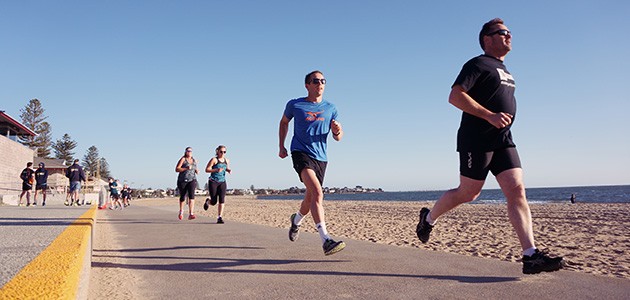
Most people seem to agree that triathlons seem to be won on the run. If you can’t run, you can’t win. As triathlon has progressed as a sport, both in draft legal and Ironman events, the run leg is where you can gain the most or lose the greatest, in both time and position. Therefore, it’s good to have a few tips and tricks up your sleeve to help you nail the run on race day.
3 Technique Tips for Faster Running
Running technique is often overlooked by triathletes and is an area where many believe that form does not play a big role. This can be somewhat true for sprinting races where pure explosive power is required; however over longer distances an inefficient running style will ultimately waste energy, fatigue muscles and produce slower times.
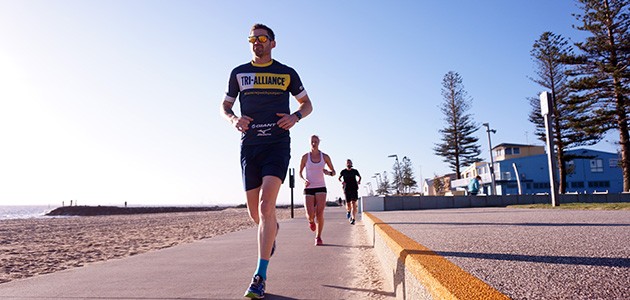
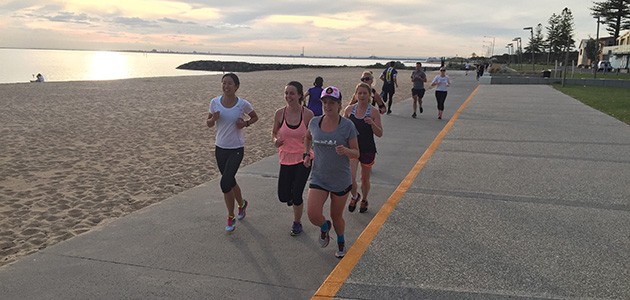
As triathletes we run off the bike when we race and for this reason we need to take into consideration our stride length. A long stride length running of the bike is not ideal due to the muscles being quite taut after being in the aero position on the bike. Over-striding can also cause you to brake and fatigue due to your foot falling too far in front of your body; sending the impact back through your legs. This can not only injure an athlete but also seriously slow down your splits. To resurrect the problem make sure that your foot lands directly under your hips and your posture is tall.
It is far more efficient in triathlons to use a high cadence running style rather than longer slower cadence strides when running off the bike. Cadence on the bike can somewhat impact your cadence when you run so it is therefore important for athletes to practice cadence work running off the bike. If you are having issues with your speed work then you need to practice running at a cadence of 90+ per minute. Treadmill running is a useful way to experiment this due to the controlled environment
Hip or pelvis position when running will determine the major muscles used. If you run with a backwardly tilted pelvis it will slow you down because your legs will be trailing behind. You also will be running solely off your quads and eliminating the glutes which are a very powerful and important muscle group when running. Concentrate on running with your pelvis (hips) forward and you should feel the power coming out of your glutes. Your leg lift will be higher through the recovery phase and give you good speed with less effort. If you have weak abdominal muscles you need work on them in order to achieve a sound hip position
Running on Empty – 4 Strategies to Running off the Bike
When most people are asked about triathlon the point they are predominantly worried about the swim leg; “I can ride a bike and I run all the time but swim…” What they don’t tend to consider is that, the run at the end of a triathlon is rather different to their regular weekend circuit.
Before you lace up the running shoes you need to have already completed a swim and a ride (also, you shouldn’t be lacing up but that’s another story). By the time you’re departing that second trip through transition you’ve already built up a level of fatigue.
Also, moving from the cycling action to your run stride involves a change to the active muscle group; this can result in a feeling of heavy or dead legs. Running off the bike is a skill of its own and one that should be practiced in training.
To minimize the dead leg effect and get moving sooner there are a couple of things you can do.
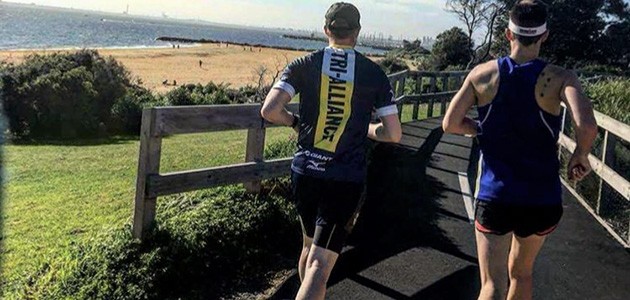
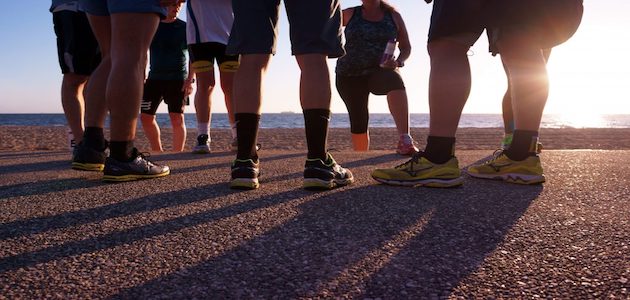
Running of the Bike Tips
A brick session is one where you stack your activities into one set. Use these sessions to prepare your body for the specific discipline of running directly after cycling. Depending upon the distance you are training for, a typical set would include a short ride followed by a run. The focus of this is to put enough effort into the ride to get the muscles fully engaged, and then quickly move into a short, sharp run.
Here you should be working toward hitting your normal cadence with a light foot fall and good technique. The good thing about this set, because the distances are short you can repeat it a few times for one session. The key here is that you move from one activity to the next with speed so a little preparation is required. Make sure you have your run kit set out before you ride and reset between bricks.
This is tip is one to remember on race day as well in training. Most cyclists, especially recreational cyclists, will spend most of their effort pushing on the pedals rather than working through the full circle of the pedal stroke. When it comes time to run the majority of the force goes into softening the landing then pushing off.
In order to prepare your legs for the running stride and loosen ‘em up you want to finish the ride by spinning at a higher cadence. Over the last 500 or so metres, drop the gears a couple of notches and try to maintain your speed via a higher cadence. Much like the brick session above, you should throw in a run off the bike, again focus on getting into a comfortable stride as soon as possible.
It’s a reality that the triathlon run is done on fatigued legs, you should get used to it. You therefore need to schedule your training sessions to simulate this e.g. complete your long ride the day before your long run or, run twice in one day to get a similar effect.
If you’ve done a few triathlons and have caught the bug, it might be time to pony up the dollars for a triathlon specific bike. They cost a pretty penny, are super aerodynamic and look awesome but they have another trick up their sleeves. Due to the geometry of the frame they are designed to shift your riding position forward and over the cranks more. The idea is to force you to incorporate the hamstrings more thus reducing some of the working load from the glutes and quads. When the ride is done you should find yourself with more energy to run off the bike.
Incorporate these tips into your training regime and get to that finish line quicker, and in better shape.
Hill Running Technique: Ascending and Descending
If you are out running in the hills it is important to know HOW to run both uphill AND downhill both to make it easier and to minimize the risk of injury. Hill running should only be introduced into your training once you have a solid base of around 6-8 weeks of endurance and strength. If you do not have this base, then you will stay on the flat until you do as it is important for the conditioning phase of your training.
So with these few hill running technique tips, the introduction of hills into your training will be easier and with less chance of impact injuries. Always listen to coaches advice and if ever in doubt speak to one of our coaches.
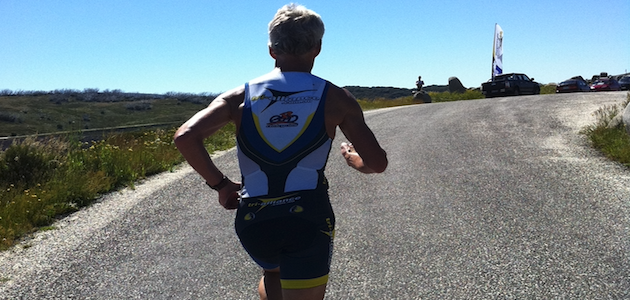
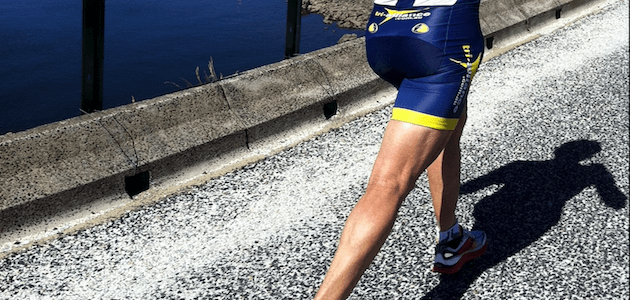
Hill Running Tips
- As you approach a hill, ensure you are holding good running form. (good posture, relaxed upper body, looking ahead)
- Increase your cadence – shorter/smaller strides (same principal as riding uphill) make sense?
- Lift your knees slightly higher than normal – although do not over exaggerate.
- Concentrate on swinging your arms lower and shorter in time with your cadence.
- Stand up tall – you can lean in very slightly from the hips, but make sure you are not hunched over. (this detracts from your prime movers)
- Don’t stare at your feet. Focus on the ground 3-5 metres in front of you. This will help you stay mentally focused on the hill.
- Continue to shorten your stride when the grade of the hill gets steeper and then fade back to normal stride as the grade eases of.
- Maintain a steady effort and regulate your breathing. If you are ‘panting’ too much then your effort is too high or your stride length too long. It shouldn’t be too hard this early in the game.
- The best way to run downhill is to lean forward slightly and take short, quick strides.
- Don’t lean back and try to brake yourself.
- Keep your hips under your centre of gravity.
- Although it’s tempting to over-stride as your pace increases, over striding pounds the feet, stresses the hamstrings and overuses the quadriceps muscles with each step.
- Keep your feet lower to the ground and control each step – this minimizes impact.
- Your stride will cover more ground downhill than it does on the flat, however your stride should still feel slightly shorter.
Cadence Running
I often say to people getting into the sport of triathlon there is running for running and running for triathlon. Despite what people might think they are quite different and this is especially hard for people coming into the sport with a running background.
When you compete in running events such as road races, cross country events and track racing you start the race fresh. Fatigue sets in over the duration of the event but in terms of your form, energy levels, running cadence and technique you’re starting the race fresh.
Triathlon however you have already done a swim and bike over different distances and at different intensities. By the time you start the run your body is quite fatigued which obviously affects your overall performance. For this reason it is important you run as efficiently as possible and with a nice high cadence.
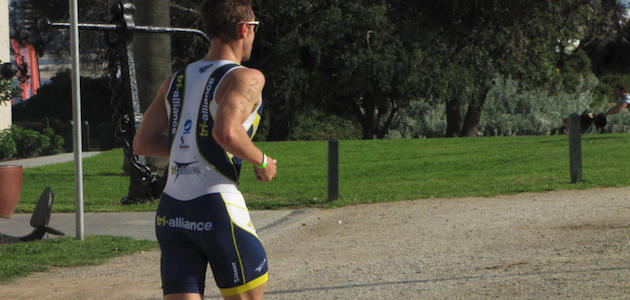
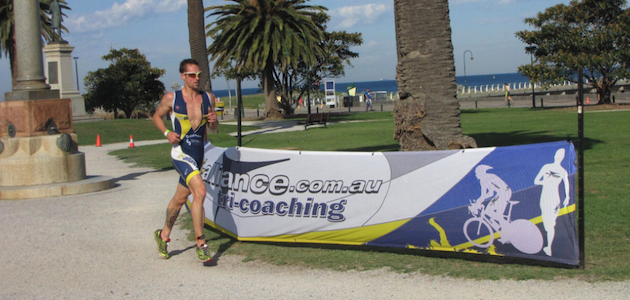
Cadence Running Tips
A high cadence prevents over-striding which is often the triathletes worst enemy. Over-striding creates excessive braking forces when their foot does not strike under their centre of mass. By increasing cadence these excessive braking forces are minimized and the foot strike is more likely to be under the centre of mass.
If you watch the good triathlon runners they look like they are hardly touching the ground. Their foot contact time with the ground is minimal and often they are actually air born during part of the running action. Their cadence is quite high at around 90-95 foot strikes per minute on each foot.
If you look at a lot of age group triathletes, their cadence is quite low, and often around 80 and under. At this cadence – it is likely you’re over-striding, with the risk of injury and lower leg complications higher, due to those excessive braking forces.
One of the main reasons many age group triathletes over stride and have a low cadence is they are already in a state of fatigue when they start the run. By improving your cadence you will be able to run faster even while in a state of fatigue.
Start counting the amount of foot strikes you have in 30 seconds and multiply by 2 to give you a number for 1 minute. It is best done on a flat surface without too many corners or interruptions such as lights, curbs, steps, corners etc.
Once you have achieved foot strike counting and have a number, the next step is to naturally try and increase it. Aim for a 5% increase to start with until that becomes comfortable and then try and increase it another 5%.
A cue our Tri-Alliance Coaches often use is to listen to your feet. The less you can hear them the better. Aim for quiet feet which produces more glute engagement, decreases stride length and therefore increases cadence and speed.
From here, you’ll be comfortably aiming for 90-95 foot strikes per minute.
Running with a metronome can also be beneficial if you prefer not to count. The beep of the metronome can help by listening to the pre-programmed beeps and ensuring your cadence is in sync with the beep.
